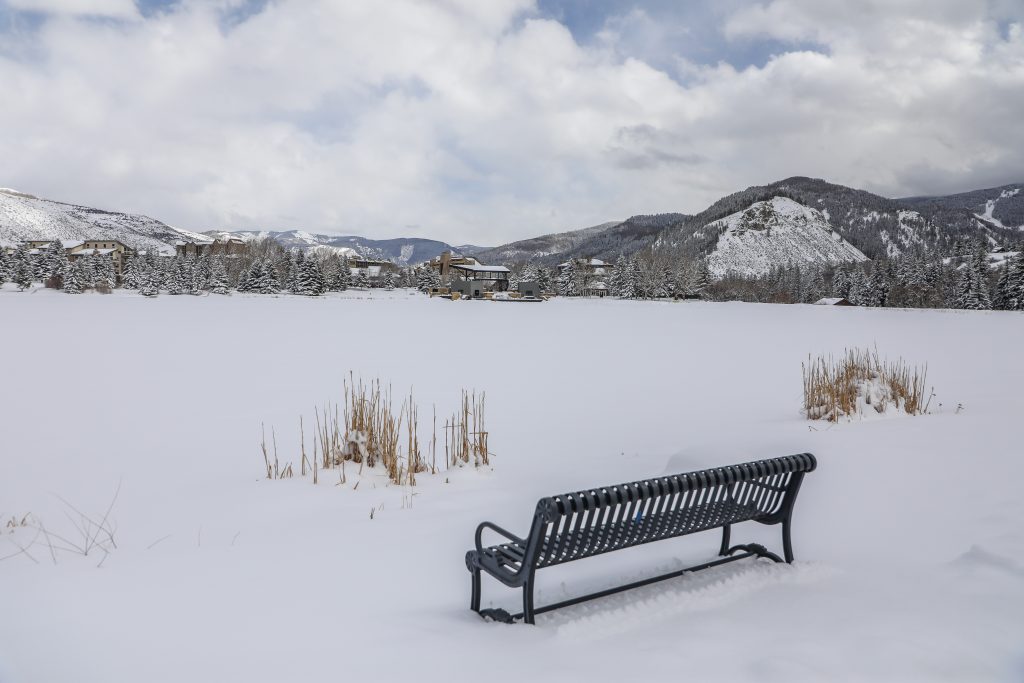Avon pushes forward with new outdoor energy use standards that would drive up costs for new projects
November 24, 2024

Chris Dillmann/Vail Daily
In several Eagle County communities, the Exterior Energy Offset Program is a climate-forward building code that requires that all new buildings offset the outdoor energy use through snowmelt, pools, spas and outdoor fire pits either with renewable energy or with payment to the town.
Avon is in the process of updating its Exterior Energy Offset Program to set higher standards for climate-conscious exterior energy use that requires new projects either install renewable energy sources or pay the town a fee in line with the cost of putting in renewables.
“We’re trying to get people incentivized to not waste energy, and to do energy efficient methods of controlling snow, snowmelt, pools, spas and fire pits,” said Derek Place, Avon’s chief building official, when presenting the updates to the Avon Town Council on Nov. 12.
The council first looked at updating the Exterior Energy Offset Program in February but decided to take more time to review the details and perfect the fee calculator.
What will change under the new Exterior Energy Offset Program amendments?
Avon first adopted its Exterior Energy Offset Program in 2015, and no updates have been made to the program since then.

Support Local Journalism
The proposed amendments would put into a play a new calculator, which is better aligned with current energy use estimations, to determine Exterior Energy Offset Program fees. The new amendments would also increase the offset requirement — either via payment or renewable energy — from 50% to 100%.
The updates would also include a 75% credit for battery storage, an added requirement for outdoor fire pits to be on a timer of maximum 60 minutes, and gas fireplaces and firepits will now be considered exterior energy uses, though they were not before. Renewable on-site energy credit options include solar photovoltaic (100% credit), air-source and ground-source heat pumps (25% credit).
For many projects, the fees will be significantly higher under the updates than under the current standards. “It’s not just the hammer of the high fees, it also creates a financial incentive to put in more renewables with the projects,” said Eric Heil, Avon town manager.
The exterior energy use calculator proposed in the amendment, developed by Crested Butte-based firm Resource Engineering Group, ties a financial cost to the energy use of outdoor devices. Under the new calculator, the assumed energy use of snowmelt more than doubles, from 34,000 to nearly 83,000 British thermal units, based on updates from the American Society of Heating, Refrigeration and Air-Conditioning Engineers. In the calculator, the fee-in-lieu now aligns with the local cost of installing solar as an offset, to be recalibrated every three years.
While some parts of the calculator can be automatically updated, numbers that might cause significant changes for developers and citizens will require council review and approval. “The nitty gritty data part, of how much energy does the system use, may update over time, but you guys would have to take a bigger step to update any of the ‘political numbers,’” that would need authorization by council to change, said Kim Schlaepfer, managing director of climate mitigation and resiliency planning for Lotus Engineering & Sustainability.
Why make these updates?
Updating Avon’s Exterior Energy Offset Program is an opportunity for the town to “lead by example,” Place said. Earlier climate-aware building code revisions the town made were taken to the Colorado Energy Office, and adopted by the state, and “we like to be a leader,” he said.
Avon, Minturn, Eagle and Eagle County are all members of the Eagle County Codes Cohort, and all have Exterior Energy Offset Program requirements in place. Eagle and Eagle County, along with Aspen, Basalt, Summit County and Breckenridge, have adopted the latest version of the codes, which require a 100% offset.
Vail does not have currently standards for exterior energy use because of the town’s widespread use of snowmelt. It is, however, in the town’s strategic plan to adopt an ordinance regulating exterior energy use by 2030, Schlaepfer said.
Building with renewable energy sources in mind is also important for mitigating climate change, which threatens to cause local health and safety impacts through increased risk of wildfires and drought, among other dangers. “This exterior energy offset program and the fee that you are all hopefully about to approve forces what has unfortunately become this new norm … in mountain development that in order to build here, we need luxury amenities,” Schlaepfer said. “Those luxury amenities do not contribute to the livelihood of local residents. In fact, they increase the risk of us all living here because they’re further contributing to climate change.”
Where does the money go?
Any Exterior Energy Offset Program-related fees the town receives go into a specific fund, which is turned over to Walking Mountains Science Center and then returned to the community in the form of rebates, such as energy audits and rebates for all-electric equipment for Avon residents. There is currently $204,000 in Avon’s designated Exterior Energy Offset Program fund account.
Gina McCrackin, the Eagle County Climate Action Collaborative manager, said she thinks of program as an opportunity for the town to keep rebates flowing into the hands of locals.
Fee comparison examples
During the meeting, Place provided three examples of how the new Exterior Energy Offset Program requirements might be implemented.
The recently opened Marriott Springhill Suites and Townhome Suites Hotel have a 91 square foot outdoor spa, a 373 square foot outdoor pool and 310 square feet of snowmelt. Under the current Exterior Energy Offset Program fee, the dual hotel was required to pay Avon $57,000. Under the proposed Exterior Energy Offset Program updates, the project would have cost the hotel $135,000. The hotel developers decided to pay Avon, rather than to put solar panels on the roof as a renewable energy source.
Stonebridge Suites, the proposed hotel that may someday be built next to Avon Town Hall, has proposed 15,350 square feet of snowmelt, a 91 square foot spa and a 373 square foot pool. Under the current Exterior Energy Offset Program fee, the hotel would either need to offset its energy use with renewable sources or pay Avon $300,000. Under the proposed Exterior Energy Offset Program updates, the very same exterior energy use would cost the hotel $1.7 million.
The Exterior Energy Offset Program guidelines would also apply to residential construction. For a home with 2,000 square feet of snowmelt, a 79 square foot spa and a firepit that burns 50,000 British thermal units of heat per hour, the homeowner would pay Avon $32,000 under the current Exterior Energy Offset Program fee structure. Under the proposed EEOP updates, the same project would cost the homeowner $130,000.
Are the updates happening now?
The Town Council passed the first reading of the Exterior Energy Offset Program during the Nov. 12 meeting, but there are no changes encoded in law yet.
The council’s final decision on the program will take place likely in January, with public comment. While unusual, the longer break between review is to give the building community time to become aware of the changes, and to bring thoughts to council and town staff, Heil said.
The new Exterior Energy Offset Program rules will become effective 30 days after final council approval.
Search
RECENT PRESS RELEASES
Related Post


